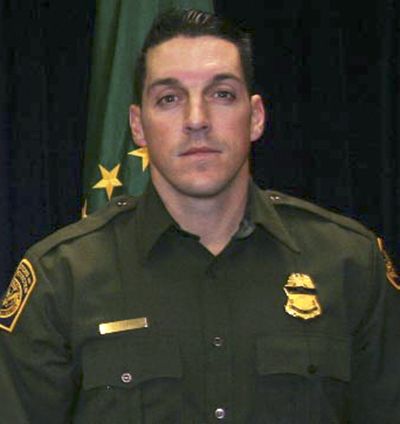Two guns at firefight part of ATF probe
Agency lost track of weapons after sale

In a sign of the cost of widespread U.S. weapons smuggling into Mexico, federal law enforcement sources have confirmed that two guns, part of a series of purchases that were being monitored by authorities, were found at the scene of the firefight that killed a U.S. Border Patrol agent in southern Arizona.
Sources said U.S. authorities did not have the ability to adequately monitor the movement of the guns toward the southern border, in part because of current laws and low levels of staffing.
As a result, “the next time they became aware of those weapons was when they turned up at the crime scene,” said one source.
“My worst fear was that they would be used in a homicide of a Mexican military official or a Mexican police official. It crossed my mind that they would be used against U.S. forces, but I didn’t think it would happen this soon,” said another federal law enforcement source.
The disclosure comes amid a widening congressional investigation into allegations lodged by whistle-blowers within the Bureau of Alcohol, Tobacco, Firearms and Explosives. They allege the agency has been aware of the purchase of assault weapons in the U.S. by buyers suspected of selling across the border, but failed to adequately track them.
Sen. Charles E. Grassley, R-Iowa, ranking member of the Senate Judiciary Committee, has asked the bureau for detailed answers about its gun smuggling investigation, known as Project Gunrunner.
In a letter to the bureau, Grassley said there were “serious concerns that the ATF may have become careless, if not negligent, in implementing the Gunrunner strategy.”
Grassley has focused on allegations that two AK-47s purchased with cash from a dealer in Glendale, Ariz., on Jan. 16, 2010, were then used in the Dec. 14 firefight that left Border Patrol Agent Brian Terry dead. Federal sources said agents learned of the sale of the guns several days after the purchase.
The whistle-blowers have complained that Project Gunrunner has focused on gathering intelligence on suspicious weapons sales, but has put less attention on actually stopping those weapons from moving south. Some also have complained that Mexican authorities had been dangerously kept out of the loop.
Federal sources confirmed that there has been controversy over the program within the bureau and, at least in the early stages, little communication with Mexican authorities, many of whom are often targeted with U.S.-smuggled weapons.
“Should they have been notified? I think you’re correct,” said one source familiar with the investigation.
“The policy (until Project Gunrunner) has always been we don’t allow any weapons to cross south of the border, because then it’s out of our hands and we can’t control it,” he said.
But the complaints were “overruled,” he said, by both the Phoenix office and bureau headquarters in Washington, D.C.
Tom Mangan, spokesman for the bureau’s Phoenix office, which oversaw the latest series of arrests under Project Gunrunner, said he was “absolutely unaware” of any instance in which federal investigators knowingly allowed weapons to be smuggled into Mexico.
At the same time, he and others said, federal agents were not always able to ascertain what happened to weapons after being purchased by straw buyers – legal residents who buy the weapons from licensed gun dealers, but end up selling the guns to Mexican drug cartels. They said this was in part because there is no federal law preventing the sales of multiple assault weapons to individual buyers, even when those buyers seem suspicious.
As the allegations have come to light, gun dealers across the southwest border have said the ATF has for years been quietly gathering information about questionable multiple purchases and even asking gun dealers to gather information, including descriptions and license plate numbers of suspicious buyers.
Federal authorities in Phoenix last month announced the indictment of 34 people accused of acting as straw purchasers for weapons bound for Mexico, mostly destined for delivery to the Sinaloa drug cartel. Many of them came from the same Arizona gun dealer believed to have sold the weapons found at the scene of Terry’s death.